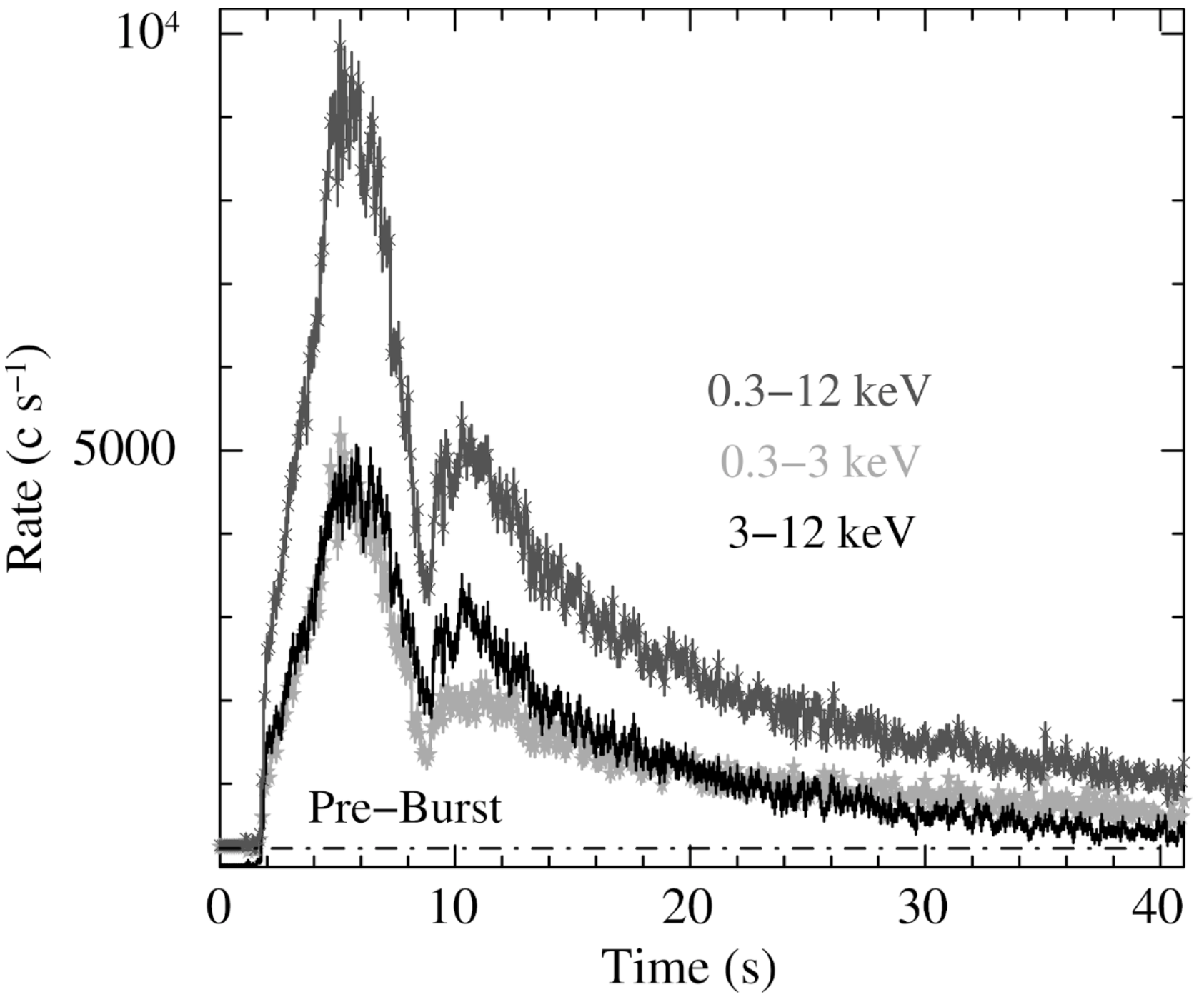NICER / ISS Science Nugget
for August 15, 2019
NICER observes a secondary peak in a thermonuclear burst from 4U 1608-52
Neutron stars are among the most exotic objects in the universe, harboring extreme physical conditions that are
inaccessible to any terrestrial laboratory. Most neutron stars reside in binary systems, where they may accrete material
such as hydrogen and helium gas from a companion star. The accreted gases flow to the neutron star through an accretion
disk, and spread across the surface only if the neutron star is weakly magnetized. (In the context of neutron stars,
"weak" means magnetic field strengths less than 1010 Gauss, where the Earth's field is approximately 0.5 Gauss and some
neutron stars exceed 1015 Gauss.) Due to the strong gravitational environment, these accumulated gases are compressed,
heated, and sometimes ignited in an unstable thermonuclear runaway explosion on the accreting star's surface.
Consequently, X-ray flashes from the system are observed that are known as thermonuclear Type-I X-ray bursts.
The time evolution of the luminosity of such bursts typically displays a fast rise up to a single peak at least an order
of magnitude higher in brightness, immediately followed by a longer decay lasting a few tens of seconds. In some bursts
the explosion can be so powerful that its radiation pushes the outermost visible layer of the neutron star – called the
photosphere – away from the surface. The expanded gas layer thus temporarily cools until it promptly falls back in the
star's strong gravity and warms up again. When observed over a restricted range of X-ray photon energies, as with past
X-ray telescopes, this phenomenon can produce two peaks in the brightness profile; NICER's broad energy coverage bypasses
this difficulty, typically producing the expected single-peak profile. Surprisingly, a double-peaked burst, from the
system 4U 1608-52, was detected on 2017 September 28 for the first time by NICER, across its entire X-ray energy band (see
Figure). Spectral analysis performed by the NICER Team suggests that the second peak is, in this case, not just a
consequence of the photospheric expansion, but is most likely due to a "re-burn" of some remaining fuel after the first
peak.

Figure:
Type I X-ray burst light-curves in multiple photon energy bands observed with NICER at 0.1 sec resolution. A secondary
peak is detected at all energies approximately 5 sec after the primary peak.
The pre-burst count rate (horizontal line at
~226 counts/sec in the 0.3-12 keV band) is also shown.
This work, which reveals details of the accretion and thermonuclear burning processes on neutron stars, is reported
in NICER's 34th peer-reviewed paper by Jaisawal et al., accepted for publication in Astrophysical Journal Letters.
<< Previous
Main Index
Next >>